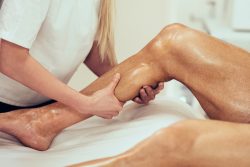 In the recent study at the Salk Institute and published by Nature Communications, researchers showed that by using molecular compounds it can speed up the regeneration of muscle tissue. These compounds are commonly used in the research of stem cells. As we age loss of muscle mass is a concern in regards to causing disabilities.
In the recent study at the Salk Institute and published by Nature Communications, researchers showed that by using molecular compounds it can speed up the regeneration of muscle tissue. These compounds are commonly used in the research of stem cells. As we age loss of muscle mass is a concern in regards to causing disabilities.
Regeneration of muscle cells was increased in mice using these compounds by activation of the precursors of muscle cells. These are called myogenic progenitors and the loss of these could be connected to muscle degeneration in age-related groups. This study found several factors that could speed up muscle regeneration and reveal the mechanism by which the loss occurred.
The study used compounds discovered by the Japanese scientist Yamanaka, therefore, naming them Yamanaka factors. They consist of proteins that have been labeled transcription factors. DNA is copied to translate into other proteins by these factors. These proteins are then used during the research in the lab to change specialized cells, possibly skin cells into a cell that is more like a stem cell. They become pluripotent, meaning they have the ability to become a different kind of cell. The lab research already knew these factors could rejuvenate cells to promote tissue regeneration but now they know how it happens.
Regenerating muscle is found to be mediated by muscle stem cells. These are also called satellite cells. They are specific to an area between connective tissue and muscle fibers. After the addition of the Yamanaka factors the research team used two mouse models to point to the muscle stem cell or niche changes. The mice used were young so that the findings of the factors were not age dependent.
In the muscle fiber model niche, muscle regeneration was increased by adding the Yamanaka factors. This worked by the reduction level of a protein called Wnt4. This activated the satellite cells to speed up muscle recovery or function. The stem cell model did not activate any satellite cells, therefore, not improving muscle regeneration. This suggests that Wnt4 is an important role in muscle regeneration.
More studies will need to be done but this study is promising in that an approach to regenerating muscle tissue can be found.
To view the original scientific study click below:
In vivo partial reprogramming of myofibers promotes muscle regeneration by remodeling the stem cell niche





